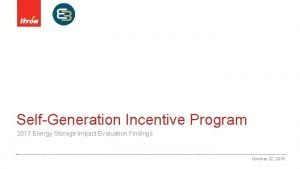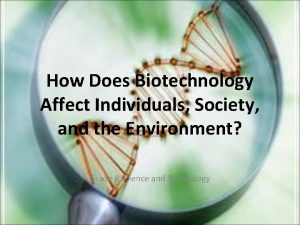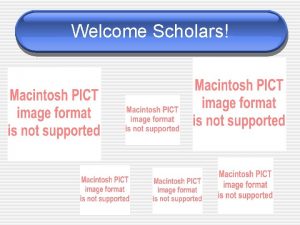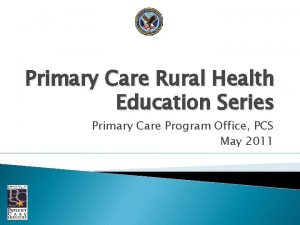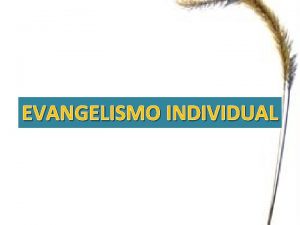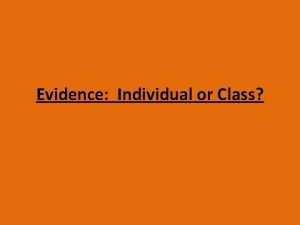INDIVIDUAL IMPACT PLAN GUIDE FOR SCHOLARS Greenhouse Scholars








- Slides: 8

INDIVIDUAL IMPACT PLAN GUIDE FOR SCHOLARS Greenhouse Scholars’ vision is to create a community of leaders who will evolve the communities of the world. Greenhouse Scholars is most different from scholarships and programs serving college students in three primary ways: 1. We rally a very large community of people to affect change it’s the concept that “it takes a village. ” For every one of you in our program, we have nearly 50 volunteers, donors, and supporters who will open doors for you, connect with you to share their experiences, and challenge you to think bigger and broader. Another critical aspect of our community are your peers and alumni Scholars. Time and again, we hear how meaningful Scholar peers are in encouraging belonging, acknowledging vulnerability, and inspiring relentlessness. 2. We specifically refer to our program as a Whole Person approach that supports you personally, professionally, and financially. While each component is important to understand utilize, it is the holistic nature of the program that makes it unique – just like you, as a whole person. Providing tools, community, networks, funds, and guidance in cooperation with one another provides life changing opportunities and growth. 3. We have selected you because of your leadership, community, relentlessness and accountability. Each of you are impacting not just your own lives but have a true calling for pay it forward to help others in your communities and families. That sense of service to others is why we hail you as catalysts for change. In all of the ways you are, and will, make an impact on your communities as leaders, role models, mentors, advisors, and change agents - you will have the Greenhouse Scholars community of support behind you. The ripple effect for the positive impact we will have, together, is powerful and will mobilize change, equity, inclusion, and opportunity. 1

TABLE OF CONTENTS INDIVIDUAL IMPACT PLAN TEMPLATE HOW TO APPROACH THE TEMPALTE YEAR BY YEAR PROCESS – p 3 – p 4 - p 6 SELECTED EXAMPLE PLANS FROM SCHOLARS – p 7 2

INDIVIDUAL IMPACT PLAN TEMPLATE Your Individual Impact Plan is a living, evolving plan so you may develop goals, priorities, and specific, actionable ideas that will change based on feedback from the Greenhouse Scholars community of mentors and professional contacts. These are your ideas to outline where you want to have an impact. Each year, you will talk to people to help you refine your thoughts. You may implement steps for achieving your ideas but you also may not outline steps until after you graduate. Ultimately, this is a tool for you to think through ideas and gather varying perspectives to help you work towards an impact that will be achieved over a period of years and as you grow as a professional. Below is the template. You may download a Word version : On the next page, we’ll share the process for evolving your plan. Greenhouse Scholars Impact Plan Scholar Name What are the topics/themes I want to focus my efforts on? What is my goal for the impact I want to have over my lifetime? List of all ideas that connect to my stated goals and may be integrated now or in the future Specific ideas I am considering - my current, top 3 overall ideas, plus steps to move forward Idea 1 3 -5 action steps to move this forward Idea 2 3 -5 action steps to move this forward Idea 3 3 -5 action steps to move this forward Idea(s) I am committed to begin now 3

HOW TO APPROACH THE TEMPLATE What topics/themes do I want to focus my impact efforts on? Topics/themes are the broadest category for this template, and it’s important you think beyond a college timeframe only. The selected topic/theme is a place where you want to create positive change. Initial questions for Scholars: What is the legacy I want to leave in my lifetime? What am I passionate about? What do I think is important? What communities do I care about and why? What positive change do I want to see in those communities? Examples of topics/themes: Healthcare/education/resource inequity, racial/religious/’otherness’ conflict, race relations among communities of color and the police, homogeneity in STEM fields, environmental sustainability and responsibility. What is my goal for the impact I want to have in my lifetime? The selected goal should be something you are inspired by, inspired to be a part of, and where you want to dedicate their time, attention, and voice. It should also be something he/she feels empowered to work towards over time. It is not an immediate goal, but one that is part of a your longer term understanding of impact. This process of reflection creates an opportunity for you to identify a direction, which of course may change and evolve, while tapping into other people for feedback and perspective. Initial questions for Scholars: What is your ‘big, hairy, audacious goal’, to borrow from leading business author, and Greenhouse Scholars supporter, writer Jim Collins. What result would I like to see related to my topic/theme(s)? Examples of goals: Utilize my engineering skills to create clean water sources for impoverished communities. Encourage positive relationships among police officers and communities of color. Support girls from under-represented groups to gain interest and skills in computing and technology. List of all ideas that connect to my stated goals and may be integrated now or in the future. This should be a large, running, brainstorm-able list, which you and the people whom you share your plan with can continue to build on. No idea is too big or too small. This can be the who, how, and what related to their goal. Examples: Identify and understand local communities and issues surrounding relations with police. Talk to community leaders at any local organizations that are already working on this issue. Think about how to bring awareness to my campus and gather other passionate individuals. 4

HOW TO APPROACH THE TEMPLATE, CONT’D Outline 3 specific ideas, and 3 -5 action steps for each idea. From the overall list of ideas, you will select 3 ideas from the above list to flesh out with your mentor and professional contacts. Example idea: Learn more about the broader issues and challenging examples of relations among police and communities of color Example action steps: Find a professor or class on campus in which I can engage/enroll. Find another professor or class offering a differing point of view and engage/enroll. Idea(s) I am committed to beginning now? This may not necessarily be completed by the Scholars, but if they are able to find ways to be involved now, they may outline here. 5

YEAR BY YEAR PROCESS Year 1 Process 1. Create an initial tight draft for your plan. Tap into 2 community members to brainstorm and refine your tight draft. i. Your Mentor: Schedule two meetings – • Meeting 1: Present your plan and engage in an initial discussion that clarifies your thinking and allows you to get initial ideas from your meeting. Meetings can be on the phone or in person. • Meeting 2: Ask your mentor to come prepared with ideas for your consideration and discussion. ii. A Greenhouse Scholars professional contact: Select a contact to share your plan. Send the plan to the contact at least 5 days prior to your meeting so he/she can come prepared with feedback. 2. During the year, Lindsey and Ryan will select plans to be reviewed by a team of volunteers, to provide feedback on goals, additional topics/themes and additional ideas for consideration 3. Update your plan based on the feedback provided to finalize plan. Year 2 and 3 Process 1. Add completed steps and results from the previous year to your plan. 2. Present to another Greenhouse Scholars professional contact: Select a 2 nd contact to share your plan in Year 2 and a 3 rd contact in Year. 3 Send the plan to the contact at least 5 days prior to your meeting so he/she can come prepared with feedback. Year 4 Process 1. Note any completed steps and results from the previous year to your plan. Tap into 2 community members to iterate on your tight draft. i. Present to another Greenhouse Scholars professional contact: Select a 4 th contact to share your plan. Send the plan to the contact at least 5 days prior to your meeting so he/she can come prepared with feedback. ii. Your Mentor: Collaborate across two meetings – • Meeting 1: Present your plan and engage in an initial discussion that clarifies your thinking and allows you to get initial ideas from your meeting. Meetings can be on the phone or in person • Meeting 2: Ask your mentor to come prepared with ideas for your consideration and discussion. 2. During the year, Lindsey and Ryan will select plans to be reviewed by a team of volunteers, to provide feedback on goals, additional topics/themes and ideas for consideration. 3. Evolve and update your plan based on the feedback provided. Post graduation: stay involved in the activities and groups that are connected to your plan. Continue to share your plan from time to time (every few years) with people who’s opinions you value. Review, iterate and capture progress once a year. 6

SELECTED EXAMPLE PLANS FROM SCHOLARS Greenhouse Scholars Impact Plan Scholar Name What are the topics/themes I want to focus my efforts on? Hunger; inequality, underrepresentation and lack of opportunity for some What is my goal for the impact I want to have over my lifetime? Provide potable water to destitute areas around the world using engineering techniques Work to provide basic needs to those around the world List of all ideas that connect to my stated goals and may be integrated now or in the future 1. 2. 3. 4. 5. Good, broad general themes! Study abroad to gain better understanding of world issues Participate in Engineers Without Borders Add the ‘why’ to each idea (e. g. , what will joining the Mine’s Mc. Bride program do for Learn Spanish your goal? ). This way the person reviewing Join Mine’s Mc. Bride program understands your train of thought Develop my leadership on campus Specific ideas I am considering - my current, top 3 overall ideas, plus steps to move forward Idea 1 Study abroad in South America 3 -5 action steps to move this forward 1. Talk to Mines’ student relations office 2. Talk to students who have studied abroad before 3. Plan expenses and pros/cons of traveling Idea 2 Join Mine’s Mc. Bride program 3 -5 action steps to move this forward 1. Work on application 2. Have application reviewed by various people 3. Have my mentor help me prep for the interview Idea 3 Join Engineers without Borders 3 -5 action steps to move this forward 1. Work on better time to management to balance academics and clubs 2. Think about how I can best contribute in this club 3. Work toward a leadership position Idea(s) I am committed to begin now As you complete certain steps, you can add different ones based on what you’ve learned All of the above ideas seem like they are things the Scholar will begin working on now. It is ok to include longer term ideas; however, it makes sense that the Scholar is wanting to start somewhere now. As you work through specific ideas over time, you will then evolve your template to swap old ideas for new, longer term ideas. 7

SELECTED EXAMPLE PLANS FROM SCHOLARS Greenhouse Scholars Impact Plan Scholar Name What are the topics/themes I want to focus my efforts on? Health and education inequity What is my goal for the impact I want to have over my lifetime? Provide solutions for health and/or educational inequality in the US List of all ideas that connect to my stated goals and may be integrated now or in the future 1. Explore career options that can be a means of providing solutions 2. Begin work in health and education reform while in college to explore career options 3. Work with organizations that provide preventative care and education to learn more about issues in these spaces 4. Take on leadership role on campus You may decide to narrow your goals slightly as you learn more about areas you might like to focus on. This is a good, broad start Specific ideas I am considering - my current, top 3 overall ideas, plus steps to move forward Idea 1 1. Explore career options that can be a means of providing solutions 3 -5 action steps to move this forward 1. 2. 3. 4. 5. Idea 2 Begin work in healthcare and ed reform 3 -5 action steps to move this forward 1. 2. 3. 4. Idea 3 TBD Talk to my advisor and research career opportunities Make a list of interesting organizations Connect with individuals in the field I want to go into Look for opportunities in my state and others Apply for Zayo internship Look for internships – explore Children’s Hospital Learn about reform already being done Focus on specific topics within health and ed reform Consider volunteer work in the areas of reform 3 -5 action steps to move this forward Idea(s) I am committed to begin now I am committed to both ideas above. 8
